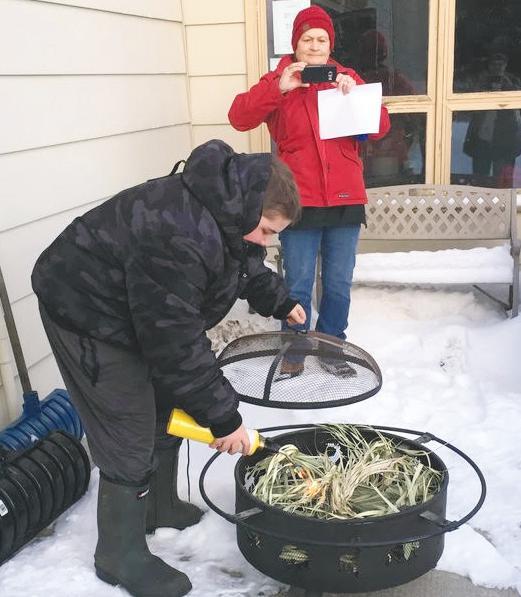
2 minute read
To fast, then feast
Give so others may live
By Bishop Helen Kennedy
Advertisement
To celebrate can sometimes be paradoxical — living within the tension between anticipation and fulfilment; the ordinary and the special; the work and the play. To use liturgical terms, we fast before we feast.
Modern sensibilities have sometimes reversed this pattern; take Christmas for example. As soon as Halloween is over, the Christmas stuff is out.
The celebrations begin in earnest long before the season, and by the time the feast of Christmas Day comes around, folks are saturated with festivities, so as soon as it is over, everyone is ready to fast and go “back to normal.”
Or Lent: the Lenten “sacrifices” that we make, can themselves be given up after Easter for a return to business and behaviour as usual.
Our annual Lenten journey is one that leads us through that paradox of celebration. To feast, we must first fast. As we prepare to celebrate, we need to have lived in a time of longing. To understand what is special, we need to have had a time of ordinary.
Lent, coming from the Latin lente, meaning slowly, invites us to slow down our lives and take stock of who we are and what we are about. Lent invites us to explore the vastness of God and the smallness of ourselves.
It invites us to feel our fears while identifying where our security lies. It invites us to sit in the desert of our soul to know we can be fed by the angels. It invites us to give so that others may live. We do this so we can appreciate the passing of time and the anticipation of the fulfilment. We become more aware of the change in season. As we change our liturgical colours, they point to the event that is coming.
Each year, we are powerfully reminded again that resurrection is not only possible, but to be expected.
Ideally, we hold onto all these realizations beyond Lent, and they become part of our authentic Easter selves. Resurrection is the hope of our Christian faith.
In fearful, vulnerable, and solitary times when it may feel as though chaos is in control, or that scarcity is our only future, the idea of abundant new life can seem impossible. But however dark our lives may be, the dawning light of an Easter-resurrected Christ breaks the power of death and darkness.
Each day new life emerges somewhere in the world, each day new hidden wonders of God become present, if only we choose to see. If only we choose to be a part of it, by continuing our Lenten almsgiving, whether by increasing our giving to our parishes, or to one of the many vital ministries of our diocese and the national church.
Resurrection of St. Matthew's Church
In recent news, the former St. Matthew’s Anglican church in Regina’s Heritage neighbourhood is being prepared for a new life. The small congregation, with courage and faith, joined with other city congregations to become Immanuel Parish.


They demonstrated the power of good stewardship, as they released their building to be “resurrected” – to become something new, once again offering life to the surrounding community.
As a property, St Matthew’s needs much love and attention, but a plan for a new life has been proposed to the City of Regina; there is support for such a project.
Together we will work to create affordable housing and a community hub responding to the current and future needs of the neighbourhood.
As Jesus was the same and yet different after the resurrection, we are committed to ensuring the project respects the beauty, history and ministry of the former St. Matthew’s, while also becoming something more than it was before.
So once again, we live through a time of anticipation before fulfilment, but our faith assures us that we will celebrate the Easter resurrection again.

